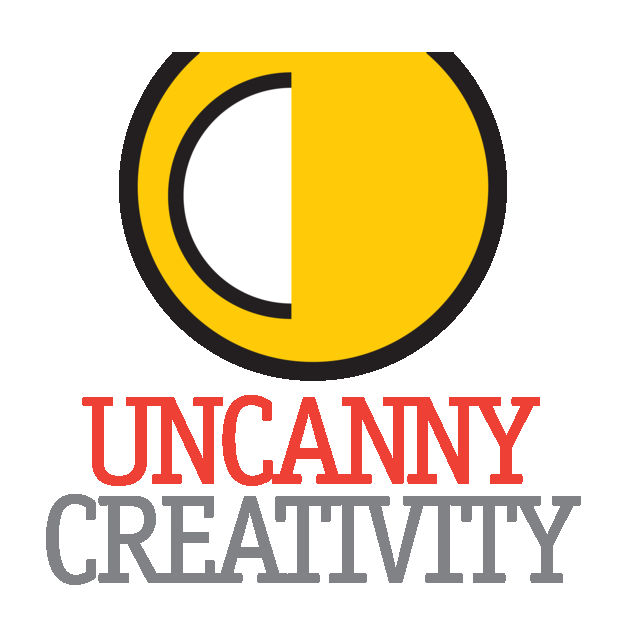
Uncanny Creativity Podcast
Uncanny Creativity Podcast
An Art & Design Productivity Podcast
- 25 minutes 16 secondsEscape the Comfort Zone: Uncanny Creativity 41
Making art often means getting out of the comfort zone.
Alan Henry of Lifehacker explains the science of breaking out of your comfort zone:
Routine and patterns minimize risk. Making something scares us. Creating something inherently feels risky. Who knows if it’ll be good?
The comfort zone feels happy with low anxiety and low stress. This is why most people never make anything.
Optimal Anxiety
Slight anxiety helps us. “Optimal Anxiety” increases performance. Too much stress and we do poorly. Comfort is the opposite of productivity. Volunteering as a designer helps me escape my routine. It can feel stressful, yet also I’m helping people.
Regularly facing fear in controlled ways prepares you better for out of control problems according to researcher Brene Brown:
Try this: Venture a new medium, performance art, visual arts, practice new tips. Small tweaks to normal ways of producing art involve exploring your curiosity.
Productive Discomfort
It gets easier to push boundaries the more you do it. Alina Tugend describes this effect of “Productive Discomfort” for the New York Times.
It’s easier to brainstorm if you’re seeking new experiences, new skills. You get used to looking at the world in new ways and question confirmation bias. Old problems will seem new.
Try this: Do old things differently. New restaurants, drive a new route, switch out apps you normally use.
Take small steps
Avoid putting things off. Keep a list of “someday maybes”. Review it regularly to see if they match with your schedule. Always wanted to paint dogs or nudes? What’s the next small step to make that happen.
Take small steps. Set small actions. Weekly daily. Think big in the long-term and small in the short-term. If you want to have a huge gallery show, first you need to slowly make painting
Try this: find clarity through action.Remember to return to your comfort zone. Have rituals that you return to for comfort.
Try this: Slow down or speed up on decisions that you have to make. Be more spontaneous in areas where you’re usually very planned. Try being more calculated in the parts where you usually are carefree
The Sweet Spot Between Overconfidence and Anxiety
Optimal levels of anxiety tested as middle range by scientist, Business Insider explains. If we’re overconfident, there may not exist enough anxiety to focus and perform the task at hand. With too much anxiety, we’ll have trouble performing even basics of tasks. Self-described worriers tended to have “high levels of brain activity when they made mistakes”. The test became difficult compared to those with less anxiety.
Try this: Actively Practice worrying less. Actively practice worrying less. Working out. Meditate. Question and answer the facts behind your worry. Practice optimism. Seek help – friends, family, therapy.
Brian E. Young is a graphic designer and artist in Baltimore, MD.
20 January 2017, 12:00 pm - 1 minute 45 secondsHow to stop multitasking: Quick Tip 6
Try this: Stop Multitasking.
Focus on one task at a time. One aspect of one task.
Multitasking even hurts well-practiced habits. A 1990’s experiment on productivity demonstrated that switching between two tasks slowed participants. The experiment was shared by the American Psychological Association. If a participated repeated the same task again and again, they were better at it. Bilingual individuals matched colors and numbers in their native language versus a second language. Working in their native language became more difficult.
Switching goals and changing trains of thoughts is hard! Notice when you get distracted and choose to refocus on one thing until your goal is met. We naturally switch tasks throughout the day. Switching from one thing to another less often makes it easier. When you note you’re tempted to start and stop often, gently push yourself back.
I always have many projects on all of my lists at every moment. Especially when collaborating, I try to stick with what I’m doing. So if I’m at an improv comedy practice, I’m not talking much about my art and music. When I’m at the piano, I try not to let my mind wander to work or another improv show. I’m at my best when I can just obsess for hours about one thing.
Have you faced a problem with focusing?
Brian E. Young is a graphic designer and artist in Baltimore, MD.
13 January 2017, 12:00 pm - 21 minutes 38 secondsIdeas I Stole From Tina Fey: Uncanny Creativity 40
I previously read the book Steal Like an Artist by Austin Kleon. I’m working on reviewing the follow-up book “Show Your Work. Inspired by Kleon’s discussion of his inspirations, I think the creative ethic of Tina Fey is pretty great. So I’m going to discuss some of her ideas and how to apply them to be creative. One thing I love is that her ideas inspire having humor about art. Humor has been linked to idea generation.
Make sure to write and even sketch your answers to these questions. Writing a powerful way to take action.
What are you resisting?
“Do your thing and don’t care if they like it.” Tina Fey
Carl Jung would say that “what you resist not only persists but will grow.” This resistance connects to the psychological effect of priming. When we’re exposed to one thing, how we respond to other things changes. We often dwell on other people’s thoughts. These are real or imagined as worry. We’ll worry to the point where we’re less focused on our own goals and ideas. That’s natural. We have to counter balance the effect.
Ask yourself: What are you resisting? Notice your resistance. Be gentle without self and write something kind about the issue, Then refocus your attention back to your goals. We can counteract priming with “kindness priming”. When exposed to kindness, we tend to be more kind.
Is this information true and relevant?
When people say, “You really, really must” do something, it means you don’t really have to. No one ever says, “You really, really must deliver the baby during labor.” When it’s true, it doesn’t need to be said.” Tina Fey
This ties into a logic problem. There are various names for this including genetic fallacy, the fallacy of origins or fallacy of virtue. We can’t conclude based solely on history, origin, or source. We have to consider context. If you don’t want to do something and can live with that, it’s really all you need to know.
Ask yourself: Is this information true and relevant? If they say you must try yoga, do they really mean that they are think that it’ll help you? If you don’t think it’ll help you, thank them for being so thoughtful and move on.
What’s the next action?
“You can’t be that kid standing at the top of the waterslide, overthinking it. You have to go down the chute.” Tina Fey
We call this analysis paralysis. We seek more and more clarity and not action. .One of my favorite poems Archaic Torso of Apollo describes in detail a headless statue. We can still imagine the head and arms, how intense this statue once was. Then we’re hit with one last detail: “You must change your life.” You know everything you need to act. Seek to balance seeking information with real creation. Small action leads to clarity.
Ask yourself: What’s the next action? Then do it. Make “Next Action” lists, not to do lists. David Allen describes next actions in detail in his book Getting Things Done. (To help you remember, print out my Getting Things Done cheat sheet.) This kind of list is specific verbs, places, and things. Avoid even broad goals like “Draw comics”. Instead try “Drawing in my sketchbook every day.” “Pencil a single comic panel every night”. Take action!
What can I do about this situation?
“Whatever the problem, be part of the solution. Don’t just sit around raising questions and pointing out obstacles.” Tina Fey
Expressing negativity doesn’t make us feel better according to psychologist Jeffrey Lohr who studies venting. We just create a habit of venting. The issues you’re expressing are real. We often complain when we feel helpless. Acknowledge that we feel helpless and prepare to deal with that feeling.
Ask yourself: What can I do about this situation? As I discussed in the episode on Creative Optimism, helplessness comes from seeing problems as being an issue with who we are. We’ll see them as long-lasting. The story we tell us is that they will impact other parts of our lives. Once we’ve noticed a question or an obstacle, write a few actions. It’s great that we’re observant! Now put that power of observation to use on a task.
How can I turn mistakes into opportunities?
“THERE ARE NO MISTAKES, only opportunities.” Tina Fey
Scott Berkin writer of Mindfire: Big Ideas for Curious Minds says that making a mistake means that you’ve created a situation where you make interesting mistakes. Once you gain confidence to accept yourself, you’ll learn by being courageous about making changes.
According to Scott Berk, there are four kinds of mistakes. Stupid, Simple, Involved, and Complex.
- A Stupid Mistake happens when we stub or toe. Just an accident of everyday humanity.
- A Simple Mistake involves missing something in an everyday process.
- An Involved Mistake involves becoming conscious of a pattern. Figuring out what makes us late for a deadline on a regular basis, for example.
- A Complex Mistake might involve all of these plus unforeseeable issues and difficult information, even when we care the outcome.
Ask yourself: How can I turn mistakes into opportunities? Even a complex mistake is really mostly a series of Stupid, Simple, and Involved mistakes. Identify the simple low hanging fruit. As babies, we had to fall a lot so that we could stand. Mistakes happen. The biggest opportunity is finding ways to laugh at it.
What can I do to keep my promises?
“The show doesn’t go on because it’s ready; it goes on because it’s 11:30.” Tina Fey
Creativity doesn’t just happen. We make it happen. It’s about making. Otherwise, we’d be trapped within the realm of thought and imagination.
Jon Stewart discussed with The Daily Beast how deadlines helped the Daily Show’s success. He made a promise to treat ideas as welcome from all staff members, not just writers. Stewarted created an environment where everyone felt comfortable sharing ideas remained important.
With this overall friendly environment, he could set a firm meeting with writers and producers at 9 am, first drafts of scripts due by noon with rewrites due by 2 o’clock. With his name and voice on the show, he felt free to rewrite drafts in his own voice which could frustrate others.
Ask yourself: What can I do to keep my promises? Notice how you’ve met deadlines in the past. If you had someone checking in on you, you might ask someone you trust to keep you accountable. You might be better with scheduled dedicated alone time. Find ways to make it super easy to finish what you start.
Brian E. Young is a graphic designer and artist in Baltimore, MD.
4 January 2017, 12:00 am - 1 minute 3 secondsImagine You’re 7 Years Old: Quick Tip 5
Try this: Imagine you’re a 7 year old.
Children playing is filled with curiosity. They haven’t learned the stock responses of adults. Ask yourself what a kid would do in this situation.
In one psychological experiment, college volunteers were asked what they’d do if school was cancelled for the day. A second group was given the added idea to “imagine themselves as a 7-year-old”. The group asked to think like a kid had more original ideas. Those who were tested as introverted, more inhibited, and less spontaneous were especially more creatively original. Details of this research were published in the Psychology of Aesthetics, Creativity, and the Arts.
To be honest, I often forget I’m an adult. It’s kind of weird that we get older and we’re the same person. Adults are really just old children. We’re not as limited as we think we are.
Has thinking like a kid helped you?
Brian E. Young is a graphic designer and artist in Baltimore, MD.
13 October 2016, 7:07 am - 16 minutes 13 secondsMake Practice into Fun: Uncanny Creativity 39
“Creativity is intelligence having fun.” Albert Einstein
Make a game of it.
A study at MIT Sloan found that games helped participants come up with more ideas. This episode has ideas to make your art practice fun. When I say art, I mean all things creative. Whether you’re creating web design, paintings, or knitting.Since you need to practice your craft regularly, find ways to make the habit fun. Practicing in art also is better when deliberate and specific. Work smarter, be productive, and keep your art into a fun activity.
What do you need to practice? Your weaknesses. Being bad at something isn’t fun. Turn your weakness into strength and have fun while at it with these suggestions
Try a sketchbook challenge.
I know that not every designer draws. And if you’re a different type of creative, you may think it’s not for you. Doodling has been shown to help with memory. Set a goal to keep a sketchbook in a certain way. A new drawing every week? A thirty-day sketchbook challenge? The internet is filled with many sketchbook challenge prompts.
Change things up.
Variety of learning methods and material helps us learn more.
Practice liking things.
Negativity, judgement, and dislike is a habit that interferes with our ability to learn. Take an interesting picture every day. This way you practice noticing new things every day. Better yet, let it inspire you. Look for colors, objects, textures, and designs that you’d love to use in your artwork. This takes you away from looking for inspiration online. Look for inspiration in the real world. Even better, post it on Instagram or Facebook along with some details imagining how you could use for your art.
Manage Time
Time is an important variable in learning. Have a physical calendar and make an X on it each day. What’s your high score for days in a row of drawing?
Know your goals.
If your desire is to be a prolific artists, spend time making and finishing art. Come up with tiny weekly deadlines that move your toward a goal
Learn something new.
Try a drawing exercise. Use ideas from a tutorial. Not just reading. Trying
Flash fiction.
Engage your imagination by writing short stories filled with ideas
Notice your good luck
Draw a comic about the lucky events that happen in your day. Individuals who believe they are lucky tend to notice opportunities. Can you edit your Mental First Draft about your day and turn it into a story about luckiness? Comics are also helpful since it’s natural to think in stories as discussed in episode 7, Tell a Story. http://www.fastcompany.com/46732/how-make-your-own-luck
Play with toys.
Playing with physical children’s toys will engage your imagination. Play is practice. Animals play to practice skills they’ll need later. http://www.bbc.com/future/story/20130109-why-do-animals-like-to-play
Watching others helps learning. Go on YouTube and watch some drawing or design tutorials http://cercor.oxfordjournals.org/content/19/2/315.abstract
Change locations.
We learn better by moving around! Practicing in different rooms and environments helps us learn. Change your scenery. On a beautiful day, draw outside. On a rainy day, sit by a window with a view. Go to coffee shops, the library, and museums.Get up and dance.
Exercise helps us learn. Put on happy music and take a dance break to reward yourself after working on your art.
Take breaks.
Relearning after a break helps us get better. Step away from your purpose and don’t forget to do something outside of art http://www.psychologytoday.com/blog/memory-medic/201201/cram-or-not-cram-is-the-question
Brian E. Young is a graphic designer and artist in Baltimore, MD.
29 July 2016, 8:10 am - 19 minutes 46 secondsTips to Change Your Perspective: Uncanny Creativity 38
Take a new perspective on your creative process. This episode presents some of my favorite quotes from the book Think Like A Freak by Steven D. Levitt and Stephen J. Dubner. How can we apply these ideas to imagination and creation? The book written by the team behind the Freakonomics book and podcast. Here’s some favorite quotes from the book and some commentary and how we can use these concepts as artists and designers.
Tip 1: Action is more important than words
“Don’t listen to what people say; watch what they do.”
One way to understand preferences is measure action. An interesting study found we’re naturally persuaded by what other’s say they like. We listen less to what they actually do. Learn to notice actions.
As artists, knowing our habits is so important. As an artist, ask ourselves how much time do we spend working on our art? What risks do you take? How does your audience respond?
One example. If I haven’t worked on my art work recently, I know it’s time to make it more of a priority. What do I say it’s important to work on? I want to finish work, share it, and adapt my processes. What actions can I set to improve those habits? Scheduling tasks, brainstorming, and identifying my real hurdles in making that happen.
Tip 2: Believe in opportunities
“Solving a problem is hard enough; it gets that much harder if you’ve decided beforehand it can’t be done.”
We tend to see only what we want to see. Due to confirmation bias, we see what we want to see. We ignore evidence of what we don’t believe in. Instead, be conscious of signs that your creative process is headed in the wrong direction.
Working a design at work, if I forget to double check that I’m following instructions, I’ll notice a huge change I need to make later. This can take up valuable time. The worse case scenario is that it makes it to the client’s first draft. Not the end of the world and at the same time, having a system of checks can make you look like a rock star.
Tip 3: Facts are important.
“One thing we’ve learned is that when people, especially politicians, start making decisions based on a reading of their moral compass, facts tend to be among the first casualties.”
We need to have to understand facts before we can make opinions. Even with art. The more our thoughts, actions, and emotions are based off of facts, the easier you will have on understanding your end product.
Way back in episode 10, Seeking Criticism, I talked about knowing what kind of criticism you’re asking for. You can give and receive better critiques if you use facts as much as possible.
For example, if a painting is meant to be highly realistic note when the perspective is off and correct it.
Tip 4: Have fun
“Why is it so important to have fun? Because if you love your work (or your activism or your family time), then you’ll want to do more of it.”
I thew a small gathering for friends a few weeks ago. The next weekend, I happened to visit my mom and tell her that I threw an event. My mom loves to host parties and events. She always had since I was a kid. So I casually mentioned that it’s not something I due often since it can be stressful. My mom’s response? You really have to love it. If you’re going to do it, then love doing it.
Don’t lose sight of what makes your creativity fun. Every moment of being an artists isn’t fun. Knowing why you’re doing even the less fun parts… That’s what makes it all worth it. Some days I don’t feel like drawing. Then I start doing it anyway. There’s a good feeling to that!
Tip 5: Data Versus Anecdote
“The plural of anecdote is not data.”
It’s interesting to share anecdotes to help us make a personal connection. At the same time, personal experiences aren’t to be confused with more substantial evidence. As I shared in the episode on Creative Optimism, our Mental First Draft isn’t always right. Even when our initial thoughts use some facts to make a point. Data can be misrepresented by stories.
Tip 6: Admit when you don’t know
“It has long been said that the three hardest words to say in the English language are I love you. We heartily disagree! For most people, it is much harder to say I don’t know.”
When I was a kid and young adult, I would say I don’t to everything. Then at other moments, I would fall into the overconfidence trap. It take practice to balance what we know and what we don’t. Have confidence and don’t be afraid of the unkown.
Tip 7: Think like a kid
“But wouldn’t it be nice if we all smuggled a few childlike instincts across the border into adulthood? We’d spend more time saying what we mean and asking questions we care about.”
When told to think like a child, adults have more ideas. Thinking like a kid helps stimulate ideas.
Tip 8: Failure is a good thing
“When failure is demonized, people will try to avoid it at all costs—even when it represents nothing more than a temporary setback.”
In the episodes on how to be wrong and how to fail, I’ve discussed some tips that help me when I’m trying to turn failure into something more helpful
Tip 9: Know when to quit:
“Resources are not infinite: you cannot solve tomorrow’s problem if you aren’t willing to abandon today’s dud.”
Quitting one thing is just saying yes to something else. Every time you decide one painting is finished, you give yourself a chance to start another.
Tip 10: Use Stories
“If you really want to persuade someone who doesn’t wish to be persuaded, you should tell him a story.”
The brain doesn’t completely know imagination and reality. A team of researchers from Emory University tested metaphors and brain function. Sayings such as “singer had a velvet voice” and “leathery hands” activate the part of the brain responsible for sound and touch.
Words describing motion activate the part of the brain coordinating body movement. A series of tests at the Laboratory of Language Dynamics.
A basic story is a cause and effect. Use stories in your artwork and in your creative process. If your see your first thoughts as your Mental First Draft, then you can edit your next thoughts and actions. Be ready to change the story about how you create
Brian E. Young is a graphic designer and artist in Baltimore, MD.
20 May 2016, 11:00 am - 49 secondsStop Doing Something: Quick Tip 4
Try this: Stop doing something
How do we make time for art? In his book Getting Things Done, David Allen recommends we ask ourselves if we really have to be doing a task.
Consider delegating a task. Maybe you hire a maid every month to cut back on cleaning.
Put tasks on your someday/maybe list. One day you’ll learn to paint abstracts, for now you’re doing portraits.
Forget and lose tasks. You don’t like drawing with charcoal? You don’t have to do it.
I used to dabble in programming. I liked it and at the same time, I’d rather paint and sketch than look at code. Someday, maybe I’ll get back into it.
How has quitting made you a better artist?
Brian E. Young is a graphic designer and artist in Baltimore, MD.
13 May 2016, 11:00 am - 20 minutes 21 secondsCreative Optimism: Uncanny Creativity 37
 Optimism helps us be more creative. We can learn to explain our lives in positive ways. We can definitely use his concepts to have a better creative process. Let’s talk about editing our Mental First Draft!
Optimism helps us be more creative. We can learn to explain our lives in positive ways. We can definitely use his concepts to have a better creative process. Let’s talk about editing our Mental First Draft!What is an explanatory style? Optimism and pessimism are the stories we tell ourselves. We tell ourselves stories about failure, loss, and problems. As discussed in the book Learned Optimism: How to Change Your Mind and Your Life by Martin E.P. Seligman, scientific experiments have tested how this makes us less creatively, more anxious and less motivated. Optimism is recognizing various types of success.
Optimism is a realistic approach. We realize that we’re not perfect and never will be. The glass can’t ever be more than half full. The stuff that fills it is all we happen to need.
Optimism is also a process of creating. We start with whatever thoughts we have about our artwork and outcomes. Then we edit just as we would a painting. Refining the strokes until we find something beautiful. Making art is story telling. It’s expression.
The Fear of failure episode was about questions we can ask when we recognize our fear. Today’s episode is about practicing habits that help prevent the fear.
There is such a thing as being over optimistic. Last episode on how to be wrong discussed the difference between confidence and overconfidence. Ask yourself:
Step 1: How personal is this?
Our Mental First Draft might tell us things like “I can’t get the colors right!” “I don’t finish anything” “I always get stuck at this part.” We tell ourselves a story: We are the cause of a problem.
Try this: Edit the thought. Instead of blaming ourselves for having trouble with a color, change the story to “That color is tricky!” When we are beating ourselves up for not finishing, recognize that “Lots of people have a problem juggling all their tasks and getting motivated.”
Better yet: Remind yourself of what you are good at. Optimists tell themselves a different story: I help find solutions! So you might say “This color is off, I’m going to practice mixing paint colors. I might need to look online for help.’
Step 2: How permanent is this?
In a Mental First Draft, our thoughts whisper another story in our minds. This is how it is forever! “I’m always forgetting things.” “I never work on this.” “I’ll never get better at this.”
Try this: Remind yourself that this shall pass. It could get better. “I forgot and it was no big deal.” “Practice makes perfect.” “Next time, I have a shot at being the best”
Better yet: Remind yourself that many good things are permanent! This story is that you’ll always have something to be grateful for.
Step 3: What does this really impact?
Our Mental First Draft will take a specific event and extend it further. Pervasiveness. This story says: If you’re not perfect at this, then you’re not good at anything. “This painting turned out terrible, I’m a bad artist!” “My design was rejected, I’ll probably be fired!”
Try this: Edit your story to be as specific as possible. “This painting isn’t what I expected, so that feels disappointing.” “This client didn’t like this design. I really liked it.”
Better yet: Remind yourself that your good qualities extend to all areas. “I’m great at trying again!”
In our pessimistic Mental First Draft, we blame ourselves for problems. We see issues as never-ending. And we extend those problems to other parts of our life.
With a little editing, we have a story where there are outside forces involved. We know that we will focus on this problem temporarily and then move on. We isolate the problem to the task we’re involved in.
Remember in the Fear of Failure episode where I tell the story of how I asked a silly question about Ice Cream at a stand?
My Mental First Draft conjured up a story. The story that asking an obvious question about ice cream means that I must bad at talking to people. Chocolate Chuck Ice Cream. Of course it’s Chunks of Chocolate. The story then was that I was permanently not a smart guy. That not thinking at this must mean I’m not great at thinking at anything.
In the revised version, we let go of that story. We edit it to realize that obvious questions come out of everyone, so it’s not personal. It was just a temporary thing, I was able to understand a split second later.
Pessimism is useful too! We all have moments where we’re not really thinking about the details. Sometimes we need to be cautious. Pessimism also makes for a great start to a stories. Optimism is what we’re left with at a happy ending.
If you’re interested in buying the book, please use my Amazon Affiliate link to support the podcast: Learned Optimism: How to Change Your Mind and Your Life by Martin E.P. Seligman
How does your explanatory style help or hinder your creative process?
Brian E. Young is a graphic designer and artist in Baltimore, MD.
6 May 2016, 11:00 am - 1 minute 1 secondWalk to Boost Your Creative Thinking: Quick Tip 3
Walking boosts creativity in real time and shortly after. Following being seated, participants scored higher on creativity tests. Walking outside had the most impact. At the same time, a treadmill still increased creativity. The paper titled “Give Your Ideas Some Legs: The Positive Effect of Walking on Creative Thinking” was published in The Journal of Experimental Psychology: Learning, Memory, and Cognition.
I live in Baltimore City, so I walk to the gym and to stores when I have time. It’s one of my favorite things about living in the city. Now that I commute to the suburbs for work, I really miss working in the city where I could walk and browse stores on my lunch breaks
Do you take regular walks and does that help you?
Brian E. Young is a graphic designer and artist in Baltimore, MD.
29 April 2016, 11:00 am - 16 minutes 51 secondsHow to be wrong: Uncanny Creativity 36
What we think will happen is not always what happens. Part of being an artist is accepting that being wrong is okay. It’s part of the fun of our work! The feeling of being wrong is a pleasant surprise. We turn mistakes into art.
“To live a creative life we must first lose the fear of being wrong.”
Joseph Chilton Pearce, author focused on human developmentTip 1: Appreciate Effort
Overconfidence effect. Confidence is great! Overconfidence is a psychological bias. Accept any outcome. Being wrong is part of the creative process.
Try this: Focus on how awesome it is that you tried. Effort means more than outcomes. If you don’t try, your chance at success is zero
Tip 2: Know What Your Control
The illusion of control. We tend to believe we control things that we have no power over. When we have control, we tend to not recognize it.
Try this: Focus on what you can control. There may be opportunities there
Tip 3: Plan for the Unexpected
Planning fallacy. We think we work fast and that tasks are quicker than we are.
Try this: Give yourself way more time than you need.
Tip 4: Be realistic
Wishful thinking. We tend to believe the things we want to happen will happen. So many of us enjoy the fun of thinking the lottery would solve our problems. Know it’s just for fun
Try this: Prepare for disappointment and know that you can handle it. If your drawing doesn’t work out, find some silver linings.
Tip 5: Be okay with a lot of different results
I loved the book Decisive by Chip and Dan Heath. I wrote more about it in “How do I make more rational decisions? 4 Steps“. We often make very narrow guesses. We guess it’ll rain any minute. If I said it’ll rain within the next year, I’m almost certainly right.
Try this: Plan for what is likely. So with my drawing, I might feel down that I don’t have time to draw today or tomorrow. I can guess that I’ll draw again sometime this month. Even better, when I am drawing I’ll know to focus and take advantage of every minute
Tip 6: Know when to revisit a decision
Another idea from the book Decisive: set a tripwire. Maybe working on my art is a low priority with everything involved with having friends, exercise, a job, and everything else I have going on. When I haven’t spent any time on my art in a few weeks, however, I might have to make more of a commitment to drawing.
Try this: Decide when to revisit your decisions. If you have a painting that just isn’t working out, are you going to work on it for 15 more minutes, an hour, or a month? When is it time to think about starting over?
Tip 7: Prepare for the worst
A false dilemma is when we think we must choose between two alternatives when both are possible. You need a safety net in all of your decisions. What will you do if nothing works out? Chances are you’ll figure something out no matter what. A very hard decision can be made much easier by having a safety net. If your goal is to be a gallery artist, developing skills that you can fall back on isn’t a cop out. You’ll be a less stressed artist know that everything isn’t riding on it.
Try this: Know when you can “Do both.” When you’re making a hard decision, find ways you can have things both ways. You can both be an artist and put some time developing other skills. Want to work on two types of art? Do it! Your life is both longer and shorter than you think.
Brian E. Young is a graphic designer and artist in Baltimore, MD.
22 April 2016, 11:00 am - More Episodes? Get the App
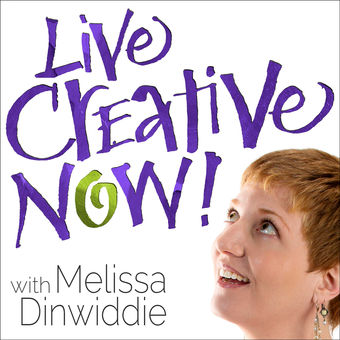 Live Creative Now! with Melissa Dinwiddie: Happiness | Creativity | Productivity | Practical Inspiration | Lifestyle Design for
Live Creative Now! with Melissa Dinwiddie: Happiness | Creativity | Productivity | Practical Inspiration | Lifestyle Design for
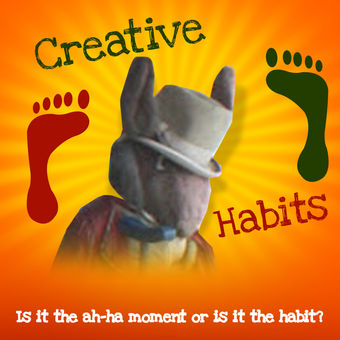 Creative Habit's Podcast | Exploring Habits for Tapping Into Creative Consciousness
Creative Habit's Podcast | Exploring Habits for Tapping Into Creative Consciousness
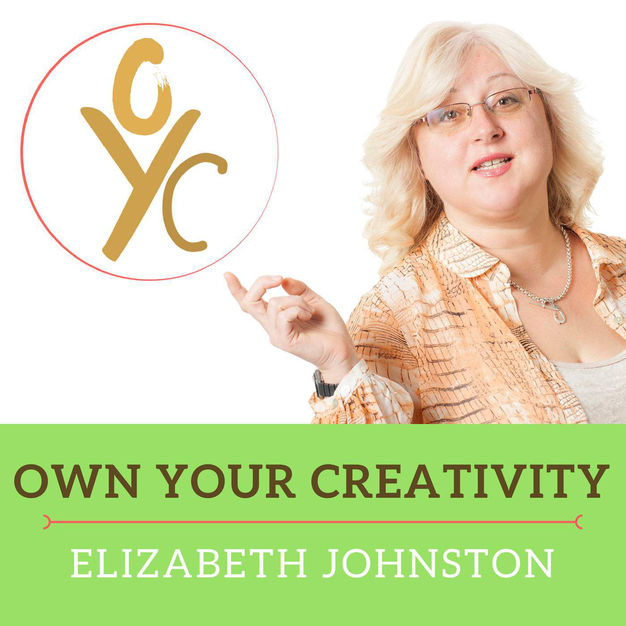 Own Your Creativity
Own Your Creativity
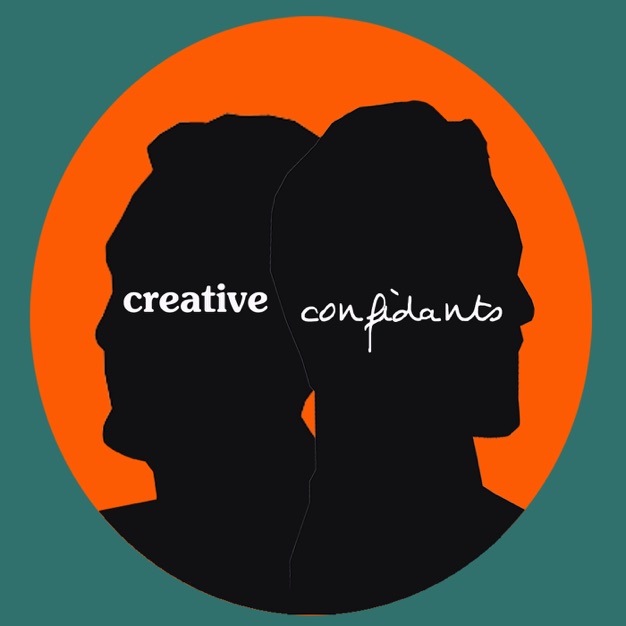 Creative Confidants - Exploring and Encouraging the Origins of Creativity
Creative Confidants - Exploring and Encouraging the Origins of Creativity
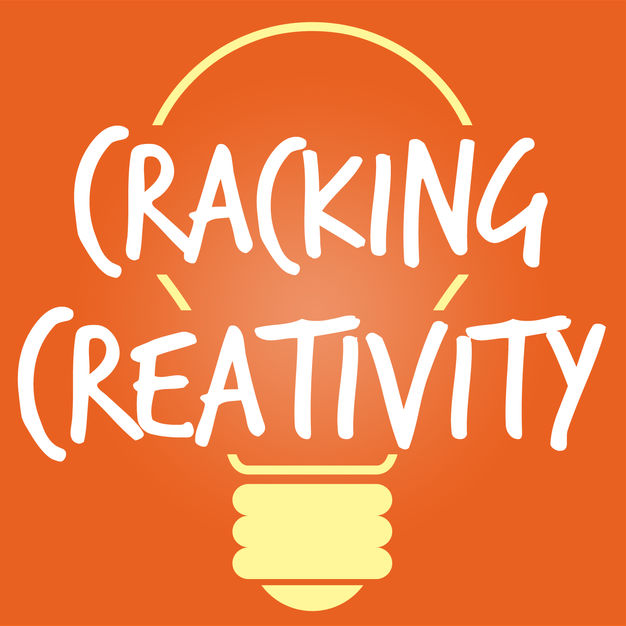 Cracking Creativity Podcast with Kevin Chung
Cracking Creativity Podcast with Kevin Chung
Your feedback is valuable to us. Should you encounter any bugs, glitches, lack of functionality or other problems, please email us on [email protected] or join Moon.FM Telegram Group where you can talk directly to the dev team who are happy to answer any queries.